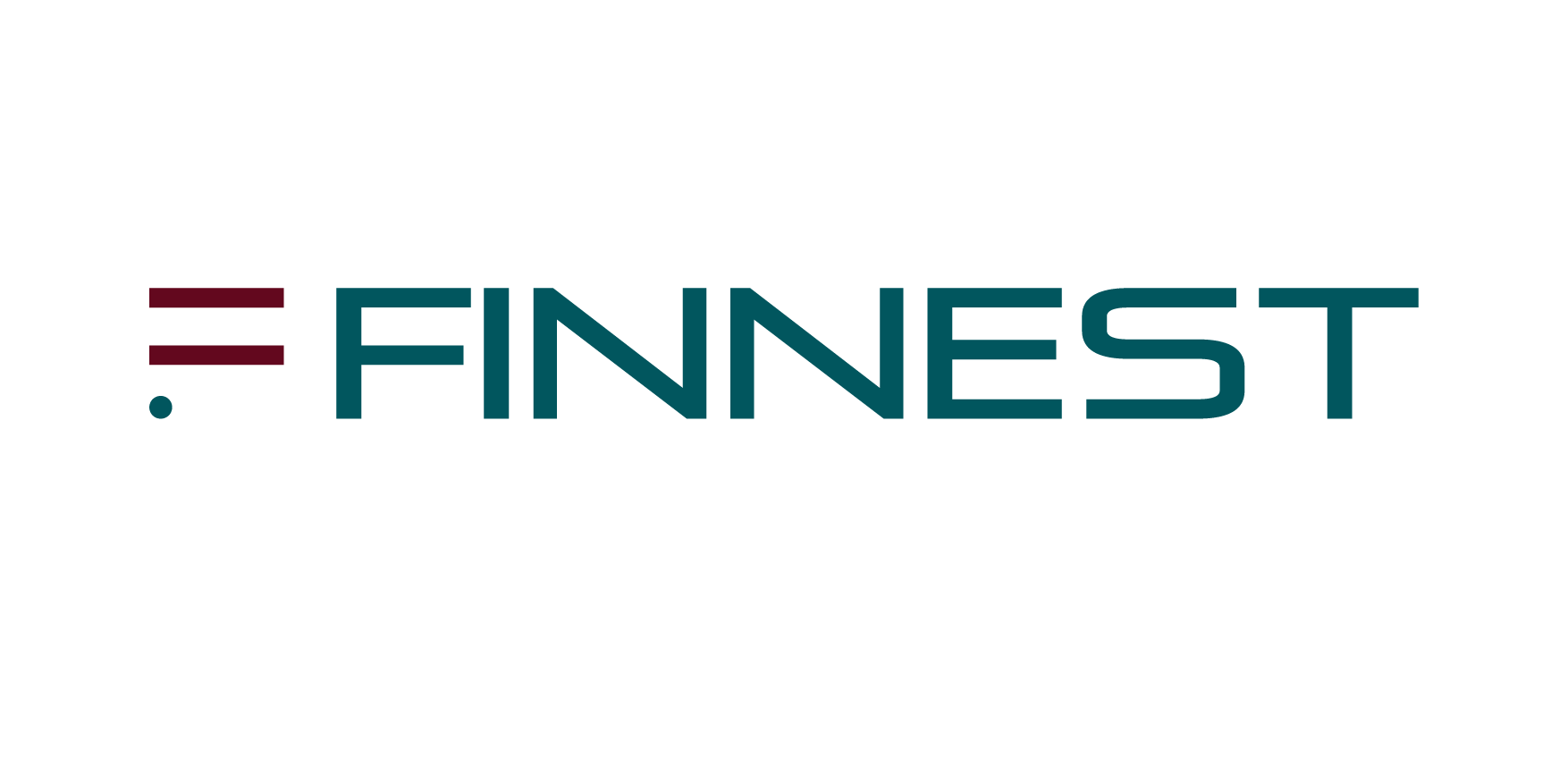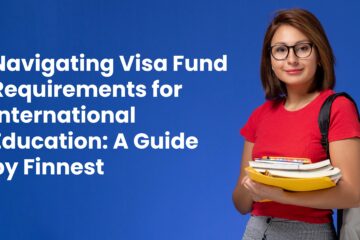Introduction: Why a Hybrid Funding Plan Works Best
Studying abroad is no longer just a dream for Indian students—it’s an achievable goal, provided the finances are planned wisely. With rising tuition fees, fluctuating currencies, and varying living costs, relying on a single funding source like a loan or personal savings may not be the most sustainable option. That’s why, in 2025, more students are choosing to blend scholarships, education loans, and personal/family savings into a smart, cohesive financial plan.
This hybrid funding approach offers flexibility, reduces loan dependency, improves visa success rates, and ensures you’re financially secure throughout your study period. In this guide, we’ll walk you through how to combine these three major sources of funding strategically—and how Finnest can help you tie it all together seamlessly.
Ready to build a solid financial foundation for your global education journey? Let’s dive in.
Step 1: Understand the Total Cost of Studying Abroad
Before you start applying for scholarships or taking out an education loan, it’s essential to understand the complete cost of studying abroad—not just tuition fees. Many students underestimate the actual financial commitment, which leads to funding gaps during their academic journey.
Breakdown of Key Expenses:
- Tuition Fees: Varies based on course, university, and country. For example, U.S. universities can range from $20,000 to $50,000 annually, while German public universities may charge little to no tuition.
- Living Expenses: Includes rent, food, transport, and insurance. Monthly costs can range from ₹60,000 to ₹2,00,000 depending on location and lifestyle.
- Visa & Application Fees: Application fees, SEVIS (U.S.), biometrics, and student visa costs add up quickly.
- Travel Costs: International flights, internal transfers, and baggage allowances.
- Health Insurance: Mandatory in many countries and often costs between ₹30,000 to ₹1,00,000 per year.
- Emergency or Miscellaneous Funds: Unexpected expenses like course materials, laptops, or medical visits.
Pro Tip (SEO-rich):
When searching for the total cost to study abroad for Indian students in 2025, always account for hidden costs and country-specific charges. You can use Finnest’s budgeting calculators or book a consultation for a personalized estimate.
Estimated Annual Costs by Country (2025):
| Country | Avg. Tuition (INR) | Avg. Living Cost (INR/year) |
| USA | ₹15-40 Lakhs | ₹10-18 Lakhs |
| UK | ₹12-35 Lakhs | ₹9-15 Lakhs |
| Canada | ₹10-22 Lakhs | ₹7-12 Lakhs |
| Australia | ₹15-30 Lakhs | ₹10-17 Lakhs |
| Germany | ₹0-3 Lakhs | ₹6-10 Lakhs |
By calculating your total projected costs early, you can decide how much to seek in scholarships, what to finance with an education loan, and how much to cover from savings. In the next section, we’ll show you how to reduce your loan burden by starting with scholarships.
Step 2: Start with Scholarships — Free Money First
When planning your study abroad finances, scholarships should be your first stop. They’re essentially free money that doesn’t need to be repaid—and they can significantly reduce how much you need to borrow or use from savings.
Types of Scholarships Indian Students Can Apply For:
- Government Scholarships: Offered by Indian (e.g., ICCR, MEA) or foreign governments (e.g., Chevening UK, Fulbright USA).
- University Scholarships: Merit-based or need-based grants offered by the admitting institution.
- Private & NGO Scholarships: Industry bodies, corporations, and non-profits often offer funding (e.g., Inlaks, Tata Trusts, AGA Khan Foundation).
- Country-Specific Opportunities: Some nations, like Germany and Canada, offer extensive funding for Indian students.
How to Maximize Scholarship Success (SEO-rich tips):
- Apply early: Most top scholarships have deadlines 8–12 months before the intake.
- Customize SOPs and essays: Tailor your personal statements to match scholarship criteria.
- Maintain a strong academic profile: Merit-based aid usually requires a solid GPA and test scores.
- Search smart: Use platforms like DAAD, ScholarshipPortal, and Finnest’s own database to discover targeted options.
Step 3: Use Education Loans Strategically
Once scholarships are in place, the next step is to cover the remaining costs through well-planned education loans. Loans are not one-size-fits-all—they must be aligned with your financial profile, university, and visa requirements.
Types of Study Abroad Education Loans for Indian Students:
- Secured Loans (with Collateral): Typically offer lower interest rates; ideal for large amounts or high-cost destinations.
- Unsecured Loans (without Collateral): Easier to access, especially for middle-income families, but may come with higher interest and stricter repayment terms.
Loan Covers More Than Just Tuition:
A well-structured overseas education loan can cover:
- Tuition fees
- Living expenses
- Travel and visa costs
- Health insurance
- Proof of funds for visa purposes
What to Consider Before Applying:
- Loan sanction timeline – align with university and visa deadlines
- Interest rate and EMI plans
- Processing fees and hidden charges
- Moratorium period and repayment tenure
- Disbursement method – direct to university or via student account
Finnest Advantage:
Finnest compares multiple lenders and helps you:
- Secure low-interest loans
- Understand loan eligibility without collateral
- Meet embassy requirements for financial proof
- Optimize your loan-to-scholarship balance
Step 4: Fill the Gaps with Personal or Family Savings
While scholarships and loans cover the bulk of education costs, personal savings and family contributions often serve as the glue that holds your financial plan together. They’re especially useful for upfront payments, visa fund proof, emergencies, and reducing loan amounts.
How Savings Help:
- Visa Requirements: Many embassies require a portion of the total cost to be shown as liquid funds in a bank account.
- Emergency Expenses: A buffer for unexpected costs such as medical emergencies, academic tools, or last-minute travel.
- Reducing Debt Load: Every rupee you can contribute upfront reduces your EMI burden after graduation.
Responsible Use of Savings:
- Avoid draining long-term family savings completely.
- Don’t mix education funds with business or investment funds.
- Use fixed deposits or liquid accounts that can be easily shown as proof of funds.
Affidavit of Support:
If your parents or guardians are sponsoring a part of your education, an affidavit of support is often required by the embassy or the university. Finnest provides templates and legal consultation to make this process smooth and compliant.
Finnest Tip:
We help you assess how much of your total budget can realistically come from savings, without compromising your family’s financial health. This assessment also improves your loan eligibility by showing financial responsibility.
Step 5: Build a Funding Timeline that Matches Visa Requirements
The key to studying abroad without financial stress lies in strategically combining scholarships, loans, and personal savings into a single, coherent plan tailored to your goals and profile. Here’s how you can build a hybrid model that works:
Step-by-Step Approach:
- Estimate Total Cost
Calculate tuition, living expenses, visa fees, insurance, and other essentials based on your chosen country and university. - Deduct Confirmed Scholarships
Subtract any awarded scholarships or grants from the total cost to determine the remaining funding gap. - Evaluate Personal Savings
Decide how much you or your family can realistically contribute upfront—without jeopardizing financial security. - Calculate the Loan Requirement
Apply for a loan only for the remaining amount, keeping your debt burden manageable. - Map Against Visa Requirements
Ensure your plan aligns with your target country’s visa financial documentation guidelines. For example, Canada and Germany require proof of liquid funds in specific formats. - Add Emergency Cushion
Always keep an extra 10–15% buffer for currency fluctuations, medical needs, or unforeseen expenses.
Sample Breakdown:
For a student going to Canada with a total cost of ₹30 Lakhs:
- Scholarship: ₹6 Lakhs
- Savings & Family Support: ₹8 Lakhs
- Education Loan: ₹16 Lakhs
Finnest’s Role:
We specialize in helping students create such multi-source funding blueprints. From helping you identify hidden costs to finding the best-fit loan products and ensuring your savings strategy meets embassy expectations—Finnest brings it all together for a smooth financial journey.
Your Dream Education is Just Smart Planning Away
Studying abroad is a big investment—but it doesn’t have to be overwhelming. By combining scholarships, education loans, and personal savings wisely, Indian students can unlock access to the world’s best universities without putting undue pressure on themselves or their families.
This hybrid funding approach isn’t just about money—it’s about building confidence, improving visa success rates, and setting yourself up for a secure future. The right balance ensures you can focus on your academics and global exposure, not financial stress.
Let Finnest Help You Make It Happen
At Finnest, we don’t just offer education loans—we build personalized financial plans that align with your goals, university requirements, and visa timelines. From identifying the best scholarships to choosing the most affordable loan options and structuring your proof of funds—we simplify every step.
Start your study abroad journey with clarity and confidence. Talk to a Finnest advisor today and craft a funding plan that works for you.
FAQs
1. Can I apply for an education loan even if I already have a scholarship?
Yes. Many students use loans to cover remaining expenses not covered by scholarships, such as living costs, travel, or visa processing. A scholarship can even improve your loan eligibility by lowering the loan amount needed.
2. How much personal savings do I need to show for a student visa?
It depends on the country. For example, Canada requires proof of funds for tuition plus CAD 10,000 per year of living expenses. Germany requires a blocked account with €11,208 per year. Finnest can guide you with updated country-specific requirements.
3. Are there education loans available without collateral for studying abroad?
Yes, many banks and NBFCs in India offer unsecured education loans up to ₹7.5–₹40 lakhs depending on the country, course, and university. Finnest helps you compare options and secure loans with minimal documentation.
4. What’s the ideal balance between scholarships, savings, and loans?
There’s no fixed formula, but a healthy breakdown might be: 20–30% scholarships, 20–30% savings, and 40–60% loans. Finnest helps tailor this mix based on your financial profile and visa guidelines.
5. How does combining all three funding sources help with my visa application?
Embassies often look for financial stability. A combination of scholarships, approved loans, and accessible savings shows that you are prepared and supported—which can improve your visa approval chances significantly.




